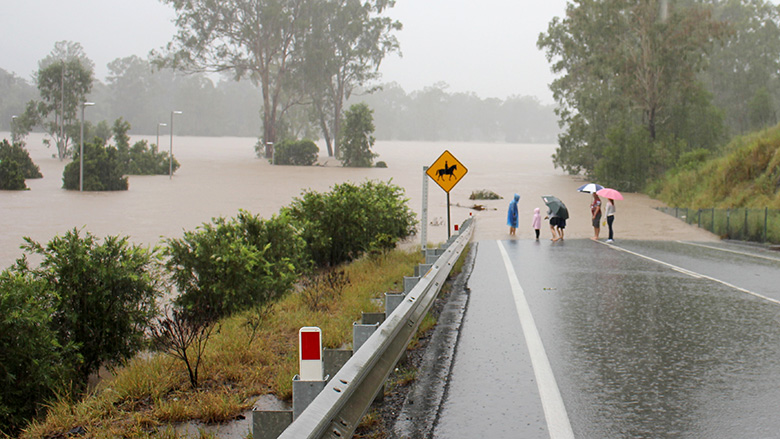“The data model creates a comprehensive picture of potential fires, floods and cyclones — the three most common weather events — and gives us a good idea of which customers we need to reach out to,” says Mr Malady.
“So far we’ve communicated with more than 3.6 million customers over a number of events, within hours of knowing about a potential disaster.”
Through the devastating floods in NSW in 2022, the weather data model helped CommBank connect with half a million customers via the CommBank app’s activity feed — from here, around 40,000 customers were guided to the Emergency Assistance website and over 4,300 customers connected via instant chat. In person, around 10,000 customers were supported in pop-up and permanent branch locations, and more than 400 customers received a personal call.
Support and benefits provided to customers include things like payment deferrals, early access to term deposits, and $1,000 grants to buy essentials like clothes.
One of the millions of customers contacted was a primary income earner who couldn’t work until floodwaters receded and the clean-up could begin. “All roads to where I work were cut off and the towns decimated. We asked the bank to defer our loan and mortgage and we got an instant answer that it could be done. [We were] so relieved,” they described.
While the current weather data model is robust, using real-time data and analytics, CommBank’s data and research team are always looking to add new data sources and ways to improve how customers are contacted.
“We want to create a faster turnaround. We’ve already significantly reduced our timeframe from 48 hours to six hours for initial communication to package activation,” says Mr Malady, but he believes there’s still room to speed up the process in these critical moments — which is a key focus for the team.
Other next steps for the initiative are around tailoring communications using customer attributes and CommBank’s world-leading H2O modelling capability, so personalisation can be more contextual. And the bank’s communication centre is looking at how cascading information can be more timely and bespoke.
The weather data model’s purpose is at the very core of CommBank’s strategy of creating a brighter future for all, says Mr Malady. “It’s about turning up for customers when they need us.”




